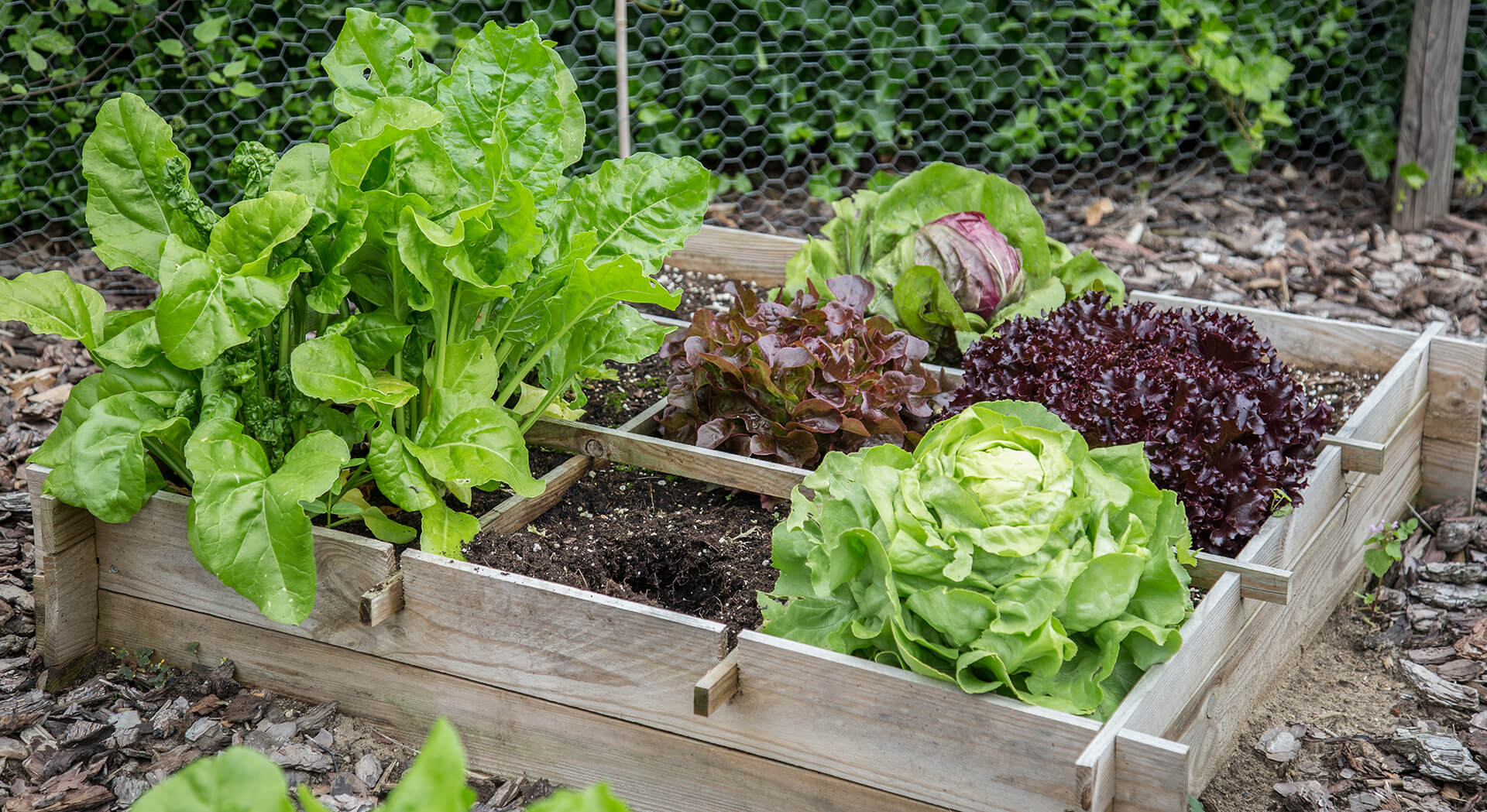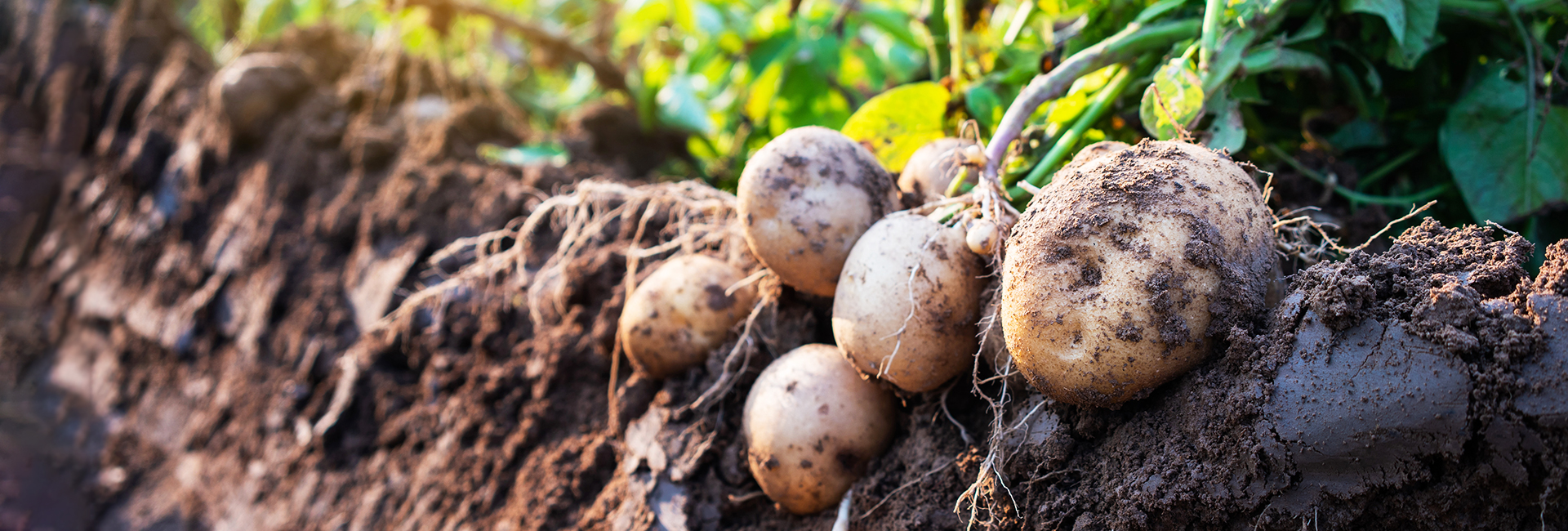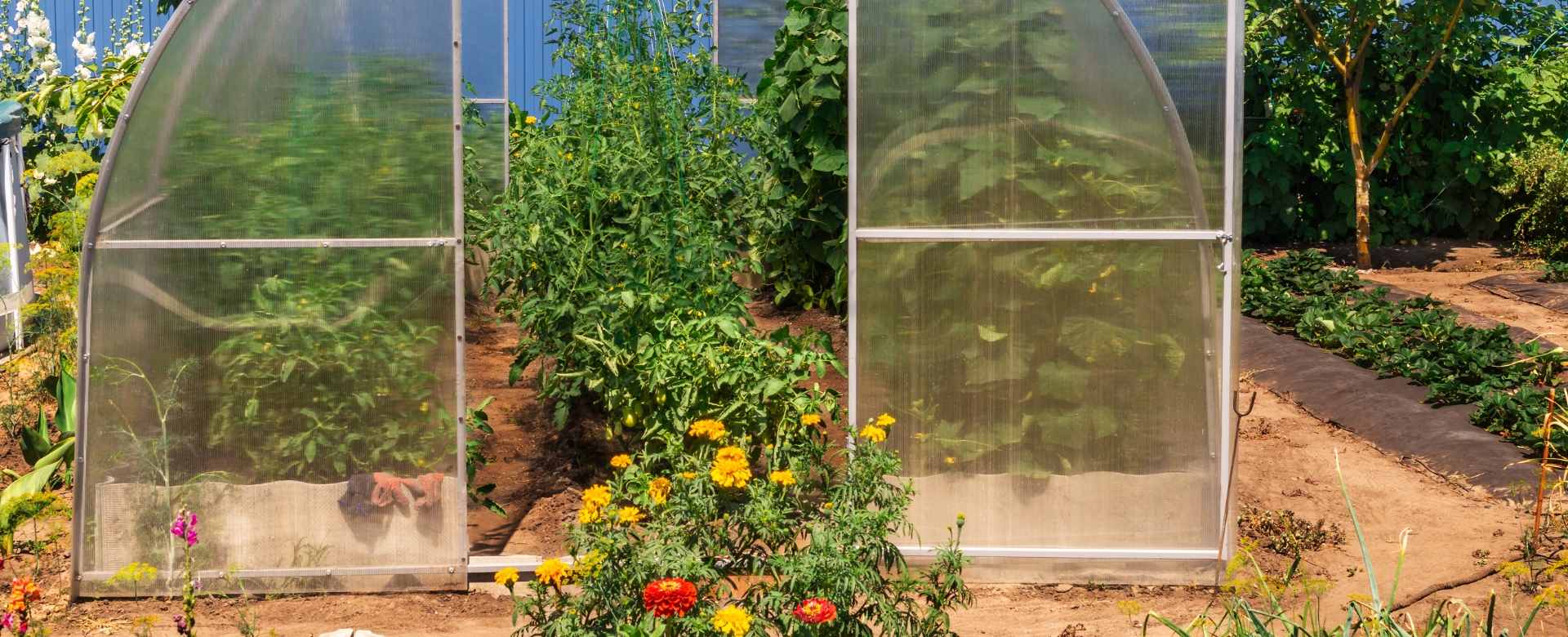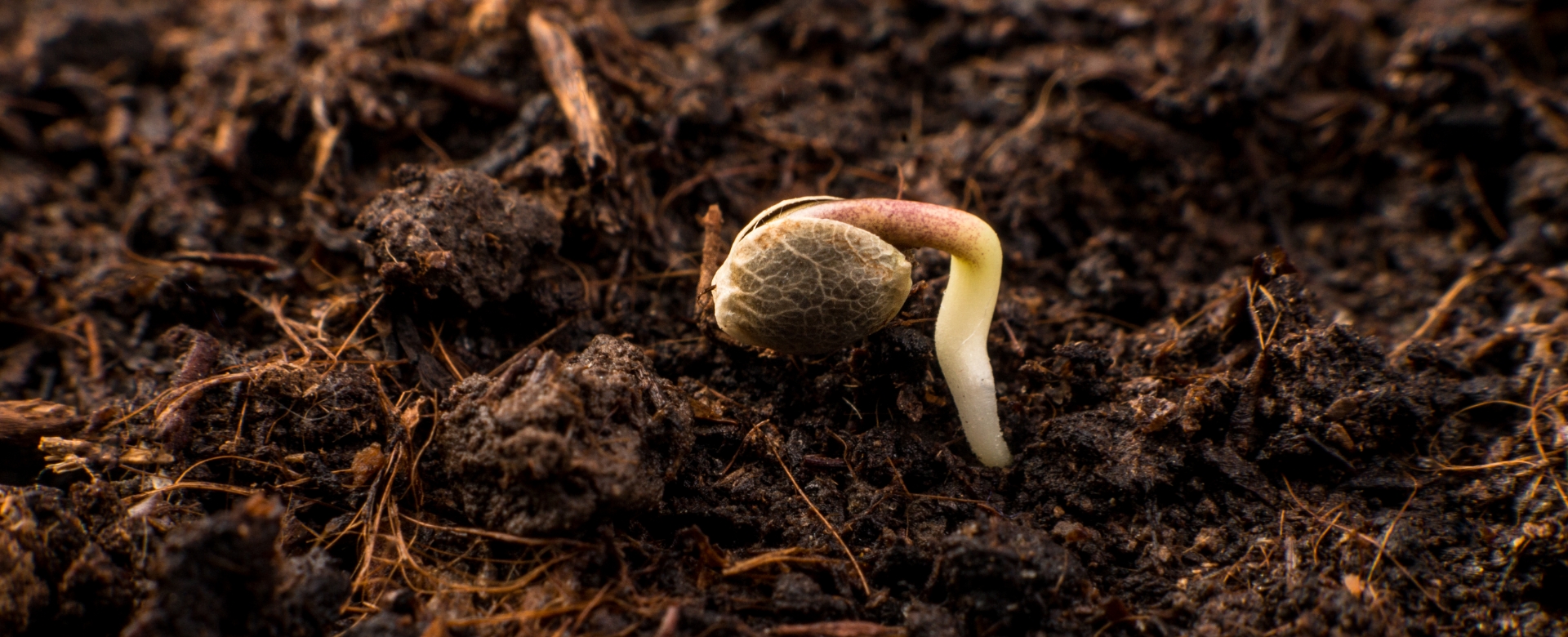You’re a passionate gardener dreaming of your own veggie oasis, but you have a problem: lack of space.
Don’t let a small garden space hold you back!
There are numerous strategies and layouts you can use to maximize yields from a small garden plot. Want some ideas to get started?
We’re going to give you the scoop about different types of vegetable garden layouts suited for those smaller spaces. Plus, we’ll provide an overview of organizing your garden layout to ensure you grow more (even in a small space).
Different Types of Vegetable Garden Layouts
When you are dealing with a small space, find a layout that is suited for your gardening goals. Do you want to grow more? Grow a specific crop? Think about what you want to accomplish.
Luckily, there are a variety of small vegetable garden layouts that can create a functional and stylish plot. Here are some of the best layout options for small spaces:
Container Garden
Container gardening involves planting in containers rather than directly in the ground. For those who are unable to set up a traditional garden in the ground, a container garden is perfect.
Benefits
- Can be started in any sunny area that’s unsuitable for in-ground or raised beds
- Good for just about any herb, vegetable, or annual flower
- Little or no weeding is necessary
Vertical Garden
Vertical gardening involves arranging plants on vertical structures instead of traditional horizontal rows in the ground.
Benefits
- Vertical space can help you maximize your yield per square foot
- Improved aeration and drainage, which reduces risk of overwatering and waterlogged soil
- Stop soil erosion due to strong winds or rain
Circular Garden
The circular garden is designed with paths leading from each cardinal direction (north, south, east, and west) to the center, forming four garden quadrants. An added benefit: The center of the garden becomes a captivating focal point.
Benefits
- The circular design allows for more efficient use of space, allowing you to fit more plants
- Doing dense planting to fill the circle allows you to conserve compost, water, and fertilizer
- No need to walk too far to tend to your plants
Spiral Garden
This kind of garden is constructed like a spiral, with a taller center section that spirals back to the bottom. It can be constructed from a variety of materials, including wood, rocks, and stones.
Benefits
- Minimal maintenance is needed once it is built (only seasonal feeding, re-sowing, harvesting, and mulch replenishment are required)
- Various plants with different characteristics can co-exist successfully
- The scale of the planting area allows for convenient access to these plants
Raised Bed Garden
A raised bed garden is a type of garden that is elevated a few inches or more above the soil level. The frame structures of this garden are typically constructed from durable wood or sturdy plastic.
Benefits
- Raised beds offer a controlled environment for plant growth, enhancing soil quality and minimizing erosion
- A barrier is created by the bed walls that help prevent soil erosion
- The soil’s excellent structure and drainage ensure that it warms up earlier in the season
Square Foot Garden
Square foot gardening consists of dividing a garden into one-square-foot squares. Each square is then planted with a specific plant type, based on its mature size.
Benefits
- Since there is no wasted space between rows, you can grow more plants in a smaller space
- This gardening style minimizes weed growth, resulting in less maintenance
- A great opportunity to experiment with edible gardening without significantly altering your surroundings
Companion Planting
Companion planting consists of growing different types of plants in close proximity to mutually benefit each other. This method serves multiple purposes, including controlling pests and attracting pollinators.
Benefits
- The presence of tall crops can offer a shield of shade for plants that thrive in less intense sunlight
- Planting different types of plants together can effectively keep the soil moist and prevent erosion
- The spread of disease can be slowed down by adding different plants
Keyhole Garden
A keyhole garden is a circular garden bed with a wedge-shaped cutout close to the center of the bed. The bed’s center acts as a compost pile, transforming organic matter into mulch and conserving water.
Benefits
- The composting blanket at the center of the garden ensures a continuous water supply for the plants
- The circular bed maximizes space, enabling you to grow more in less space
- Waste is minimized as food scraps and other organic materials are used to produce compost
Hanging Baskets
Garden baskets hang gracefully from hooks and chains, allowing you to showcase your plants in a structured and stylish manner. Hanging baskets are a great solution for homeowners who have limited garden space.
Benefits
- Raising your plants can lower the likelihood that ground-dwelling pests will harm the foliage
- Grow a wide range of plants without sacrificing ground space
- Strain on the back and knees is reduced thanks to the basket’s easy access
How to Plan a Vegetable Garden Layout
Now you have some vegetable garden layout ideas. But once you’ve landed on a type of garden, the next step is to plan it properly.
When looking for a plot to layout your garden, consider these factors:
- Choose the Right Location: Select a space that gets good sunlight and has convenient access to a water source. Most vegetables require full sun (6-8 hours per day).
- Prepare and Test the Soil: Test soil nutrient levels and pH. Then, make modifications if needed. Soil for vegetable gardening should have a deep and crumbly texture and be rich in nutrients. Most vegetables thrive in soil with a neutral pH.
- Choosing Vegetables for Small Spaces: Consider implementing dwarf, compact, or bush varieties, as they take up less space. You can also interplant fast-growing vegetables with slow-maturing ones to get the most out of your space.
- Determine Garden Layout Type: Choose a layout type that aligns with your gardening goals, such as finding a type that accommodates apartment living.
- Design the Layout: Decide on factors like the size and shape you’re looking for and the materials you’d like to enhance its overall appeal (like pea gravel or bricks).
- Implement Companion Planting: By arranging various plants in your garden to benefit one another, you can experience fewer pests and draw in pollinators.
- Watering System: A drip irrigation system is a perfect choice for raised beds and containers. It delivers water directly to the plants’ bases, reducing evaporation and water waste.
- Pest Consideration: Every season, rotate your vegetables around in your beds to interfere with pest life cycles.
- Create a Planting Calendar: Jot down sowing, transplanting, and harvest dates in a garden planner or app.
How to Choose the Best Garden Layout for a Small Space
When deciding on the best layout for your limited space, it is important to consider several factors, including the following:
Assess Your Space
Take a good look at the space you’d like to ideally have for your garden.
Does the spot you have in mind provide 6-8 hours of direct sun every day? Is there access to a water source? How about rich, well-draining soil to grow those healthy and delicious vegetables for your upcoming BBQ?
Whip out the tape measure and take note of the length and width of your desired space. Also, consider if there’s any drawback, like walkways or furniture, that would inhibit your vegetable garden layout plans.
Purpose and Priorities
This is your opportunity to get crystal clear about what you want for a garden.
What are the exact vegetables you want to grow? Is there a certain motif that you’re looking to achieve? Do you or someone in your home need wide pathways to accommodate mobility issues?
Multi-Functional Furniture
Of course, you want to select the perfect furniture to complement your tiny garden oasis.
It’s important to search for pieces that maximize your space in addition to enhancing the look of your space.
Be on the lookout for benches with convenient storage chests to easily store your gardening tools and cushions.
For those summer cocktail parties with your friends, use folding hanging chairs that can be neatly stored against walls or fences.
Use Edible Landscaping
To add even more zest to your garden, you should create a gorgeous oasis filled with color and fragrance.
A great benefit of edible landscaping is deciding on plants that offer a variety of benefits that go outside of the kitchen. While rosemary adds the chef’s kiss to a hearty winter dish, it can also be made into a tea to help with inflammatory issues.
And while violas, for instance, are known for their rich purple color, they can also be used as a garnish for a delicious summer salad.
Color and Design
Looking to add some flair to your small garden?
Spice up your space with a wide variety of plants in different colors. Lavender or blue hydrangeas can be selected if you’re looking to create a calming ambience. To achieve a more cheerful vibe, fruits like oranges and lemons are great options.
To enhance the visual appeal of your garden, consider adding layers with a mix of tall and small plants. With this method, you can maximize space and create a visually appealing environment.
You can also enhance its charm by placing a beautiful garden ornament, such as a porcelain birdbath or a vibrant birdhouse. This will captivate both your guests and your feathery friends alike.
Optimize Paths
Maximizing your small garden space requires you to have strategic planning in place.
To maximize usable space, implement straight, efficient paths, and be sure to avoid unnecessary curves or sharp turns.
Also, create paths that are wide enough for comfortable movement and accessible to everyone. That includes avoiding steep inclines or slippery materials.
Consider Seasonal Changes
Do some homework on the sun needs of the vegetables you would like to plant and the best time to plant them. This will ensure year-round success in their performance.
For instance, for plants that are sensitive to colder temperatures, try out mini greenhouses or cold frames.
Maintenance and Accessibility
Once you have set it up, you want to rest assured knowing that you can enjoy a low-maintenance and easily accessible garden.
You want to suppress weeds, retain moisture, and reduce the need for watering. To do this, be sure to apply a generous layer of mulch around your plants. Additionally, explore self-watering containers or raised beds equipped with irrigation systems, so you don’t have to worry about constantly watering your garden.
Water Features
Consider the way in which a particular water feature will enhance the overall aesthetic of your small garden or yard.
If a birdbath is not your cup of tea, you can always incorporate a small cascade waterfall fountain to create an elegant look.
If you’re into a more festive vibe, you can always choose one with LED lights that shift colors depending on the vibe you’re going for that day.
Benefits of an Organized Vegetable Garden Layout
If you have an organized layout in place, you can create a better gardening experience for yourself thanks to these benefits:
- Space Utilization: A raised vegetable garden layout can make a huge difference, especially for those who have little space to work with. Whether you’re planning a raised garden or a square-foot one, they work best when you’re planting by area rather than rows. Space is saved, and you have more space to grow your vegetables in a smaller area.
- Increased Productivity: Planting the right amount of plants in the right spot is made possible by a well-planned layout. This prevents overcrowding and ensures proper root development and sunlight exposure.
- Accessibility: A strong layout typically involves incorporating sufficient space between planting beds, providing benefits for individuals with limited physical mobility.
- Easy Implementation of Crop Rotation: With an organized layout in place, the soil can stay rich and balanced through the seamless rotation of crops across multiple seasons.
- Seasonal Planning: You can interplant fast-maturing plants with slower-growing ones. As a result, you can fully use your space and enjoy multiple harvests from a single bed within a single season.
- Mobility and Flexibility: With a good garden layout, you can easily change your garden whenever desired. Raised beds and plants in baskets are two gardening techniques that allow you to move or rearrange the plants to suit your demands and sunlight conditions.
Conclusion
A small garden should not keep you from growing a fantastic garden. If you’re looking to grow your own vegetables, it is important to maximize space. It is possible for you to make the most of your smaller space with some creativity and proper planning on hand.
Remember to start small and experiment with what works best for your unique needs. You’re already one step closer to achieving the harvest of your dreams!
To get started on your gardening journey, be sure to visit your local Homegrown Outlet today!
FAQs
There are a few things to consider when planning your layout:
- Measure your chosen space
- Determine the amount of sunlight that space receives
- Analyze your soil’s drainage and moisture level
- Select dwarf, bush, or compact varieties, which will save on space
- Fantastic soil: You can carefully manage the content, and the arrangement of soil can be carefully managed in raised beds. As a result, plants thrive in a nourishing environment.
- Versatile: Different types of materials can be used to make a raised bed. It can also be made to fit into any space, making it an ideal solution for smaller spaces.
- Better water control: Raised beds provide excellent soil drainage, preventing waterlogging.
For a garden bed meant for vegetables, it should be between 12 and 18 inches deep to guarantee that the roots of your plants are at a sufficient depth.
- Corn and tomatoes: Corn and tomatoes are both considered heavy feeders that can deplete the nutrients in the soil.
- Tomatoes and potatoes: Planting the two plants together can increase the chance of infection because they are both susceptible to the same diseases, such as blight.
- Carrots and dill: Planting them together can result in cross-pollination. This results in the dill tasting strange.
- Fennel and most other plants: Fennel can hinder the growth of most plants since it can produce allelopathic chemicals.




